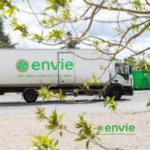
Google Ad Grants Dictionary: Key Terms to Know
Managing a Google Ad Grants account can be a daunting task, and sometimes requires navigating a never-ending lexicon of new terms. This comprehensive Google Ad Grants Dictionary can serve as a reference guide as you navigate the Google Ads jargon. Knowing the language is essential to increasing your reach and maximizing your impact by effectively managing your own account. We've written this glossary for everyone, but we've also thought of our friends in the nonprofit sector who are working to maximize their Google Ad Grants. Feel free to bookmark this page and return to it whenever you need to.
Ad group
Ad groups exist within your campaigns. An ad group is a collection of closely related keywords and the ads attached to them. Google Ad Grant accounts must always have at least two active ad groups in each campaign.
Ad Ranking
How Google prioritizes ad display. This is determined by your cost-per-click (CPC) bid and your Quality Score. If you're interested, you can learn more about the inner workings of the Google Ads auction system. Google prioritizes paid ad accounts over subsidized accounts for auction space. Subsidized accounts are only considered for placement when inventory remains available.
Ad Scheduling
The dates and times you want your ads to appear. If you know most of your donations are made during work hours, you can use ad scheduling to pause your campaigns during the evening hours when people are less likely to donate, to focus your budget during high-potential hours.
Google Ad Grants Announcement
The text ad which is displayed to users on the search engine results page after searching for a phrase that matches a keyword in your account. Grant accounts must have at least two active ads in each ad group at all times.
Automated Rules
A tool that automatically updates your campaigns, ad groups, or keywords based on conditions you set. For example, you can create an automated rule to automatically pause any keyword with a Quality Score of 2 or lower (to ensure your compliance with Google Ad Grants policies, even though they now do this automatically for you). Automated rules can help you minimize the time you spend monitoring your account on a daily basis.
Bid adjustments for Google Ad Grants
A way to automatically increase or decrease your CPC bid based on various parameters (including time of day, day of week, device, location, etc.). If you know that the conversion rate for donations on mobile devices is very low, you can set a bid adjustment of -50 % for mobile devices in your donation campaign (indicating that you are willing to spend 50 % less for user clicks on mobile phones).
Large Correspondence
A keyword match type that allows your ad to appear whenever someone searches for that phrase, or a similar phrase. For example, if you enter the keyword "volunteer opportunities" as a broad match keyword, it could match search queries like "volunteer opportunities" or "engagement ideas."
Google Ad Grants Campaign
Campaigns host ad groups. Budget, location targeting, language targeting, and other settings are all set at the campaign level. You'll have multiple campaigns in your account. Here's how to set up your first Google Ads Grants campaign.
Change history
A report that shows all changes made to your account, including the date and time they were made, as well as the email address of the user who made them. This is useful for identifying the cause of any unexpected changes in performance.
Click
Engagement with your ad and the page it links to. Every time a user sees your ad and clicks on it, a click is recorded.
Click-through rate (CTR)
Total Clicks / Total Impressions. This tells us the percentage of people who clicked on an ad after it was shown to them. Generally, the higher the better, as it demonstrates interest in your ad from users who typed in your keywords. Ad Grant accounts are required to maintain an account-wide CTR of at least 5%.
Conversion
A key action taken on your website that indicates user engagement (video views, email signups, donations, etc.). You should set these actions up as goals in your Google Analytics account. Conversions are essential for understanding the value of your site traffic and campaigns! Setting up conversion tracking and connecting your Google Analytics account to your Ad Grant account will allow you to see key conversion data in the Google Ads interface.
Cost per click (CPC)
Total cost of your clicks / Total number of clicks. What you actually pay for a click on your ad.
Daily budget
The maximum amount you are willing to spend on a campaign in a given day. For Grant accounts, this is capped at approximately 329 $ per day.
Destination URL
The URL of the page on your site that you send users to after they click on your ad.
Display URL
The URL that is actually shown to users in your ad. This doesn't need to be an exact match to the destination URL, as long as you don't engage in bait-and-switch. For example, your destination URL might be mynonprofit.org/support/donate/recurring, and your display URL might simply be mynonprofit.org/donate.
Exact match
A keyword match type that tells Google to show the affiliate ad for the keyword only if a user types that exact phrase. If you enter [volunteer opportunities] as an exact match keyword, it will only show up when someone types volunteer opportunities into their Google search bar.
Geo-targeting
The setting that allows you to choose in which territories your ads are displayed. You can target as specifically as a congressional district, or as broad as an entire county. Grant accounts are required to include some level of geotargeting and must target locations where their services are relevant (either the countries in which you work or the countries where you fundraise or have offices).
Google Analytics
Google's free web analytics tool that lets you see exactly what users are doing on your websiteThis is crucial to understanding how your Google Ads campaigns are performing.
Google Display Network
The Google Display Network (GDN) contains over 2 million websites, videos, and apps where your ads can appear. Combined, the GDN reaches over 90% of all internet users, and is a great place to present your ads to audiences who may be earlier in the purchasing and consideration process than those on Google Search. Note that grant-based ads are not eligible to be displayed on the GDN.
Impression
An impression is counted each time your ad appears on Google's search results page.
Keyword
Words or phrases you choose to associate with your ads. When a user searches for something on Google that matches a keyword in your account, the affiliate ad will appear in the search results.
Keyword Planner
A tool in the Google Ads interface used to find new keywords, estimate search volume, and other competitive metrics.
Targeting by language
A key parameter at the campaign level. Make sure your keywords and ad copy match the language you're targeting!
Limited by budget
You'll sometimes see a campaign in your account flagged as budget-constrained. This simply means that the budget you've set for the campaign isn't enough to cover all searches for your chosen keywords. This isn't necessarily a bad thing, just an indication that you could potentially spend more on that campaign.
Low search volume
You'll sometimes see a keyword in your account flagged as having low search volume. This means the relevant keyword(s) don't have a long search history on Google. Again, this isn't necessarily a bad thing, just an indication that these keywords will likely generate fewer impressions and clicks than other keywords.
Maximum CPC Bid (Max CPC)
The maximum amount you are willing to pay for a click. For Grant accounts, this is capped at 2 $, unless you use the Maximize Conversions bidding strategy.
Negative keywords
A type of keyword match that excludes your ad from appearing for certain search terms. Negative keywords can help prevent your ads from appearing for irrelevant or inappropriate searches. For example, a nonprofit organ donation organization that wants to reach people looking for organ donations might include clothing or electronics as negative keywords to prevent their ads from appearing to people searching for places to donate household items.
Sentence Match
A keyword match type that allows your ad to be displayed only when a specific phrase is included somewhere in a search. For example, adding "volunteer opportunities" as a phrase match keyword would allow your ads to be displayed for volunteer opportunities in Paris, or for student volunteer opportunities, but not for volunteer positions near me.
Quality score
A score from 1 to 10 that Google assigns to keywords to indicate the quality that the keyword, ad, and landing page deliver to users. The closer to 10, the better! Google's Ad Rank takes Quality Score into account when determining which ads to show, and typically the higher your Quality Score, the lower the CPC for a keyword. Grant accounts are required to maintain a Quality Score of 2 or higher for all keywords in their account, and risk suspension if they continue to bid on low-quality keywords.
Search term, or Search query
The words or phrases a user actually typed into Google. These searches are then combined with the keywords you've included in your ad groups, and this is how ads are chosen to appear. In Google Ads, this report is called the Search Terms report. In Google Analytics, it's called the Search Query report.
Sitelink Extension
An additional link at the bottom of your ad that directs people to additional pages on your website. These are set up by you and are a great way to take up more virtual space on the SERP. Google requires Grant accounts to have at least two unique sitelink extensions in their account.
Conclusion
This Google Ads glossary is a valuable resource for anyone looking to master the intricacies of online advertising. Whether you're a seasoned professional or a beginner, this information will help you optimize your campaigns to maximize your impact. For nonprofits using the Google Ad Grant, this guide is especially helpful in making the most of this opportunity. Regularly reviewing it will help you better manage your campaigns and achieve your philanthropic goals. By understanding these key concepts and applying them wisely, you can transform your advertising campaigns into effective drivers for promoting your cause and engaging your target audience.



